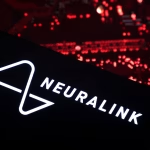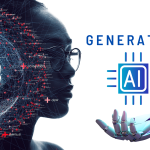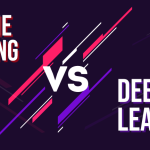Artificial Intelligence (AI) has become one of the most transformative forces in technology, but within AI, two terms are often used interchangeably Machine Learning (ML) and Deep Learning (DL). While both are subsets of AI, they operate differently and have distinct use cases. Understanding how they differ is essential for anyone exploring data science, automation, or AI-powered solutions.
This article explains the key differences between Machine Learning and Deep Learning, their applications, and which one is better suited for specific tasks in real-world scenarios.
Table of Contents
What Is Machine Learning?
Machine Learning is a branch of Artificial Intelligence that enables computers to learn from data without being explicitly programmed. Instead of following hard-coded instructions, ML systems improve their performance over time by analyzing patterns and relationships in datasets.
For example, if you feed an ML model thousands of labeled images of cats and dogs, it learns the characteristics of each and can later classify new images accurately. ML relies on algorithms such as Decision Trees, Support Vector Machines (SVM), and Linear Regression to make predictions or classifications.
A popular example is spam detection in email systems. Machine learning models analyze historical data about spam emails subject lines, senders, and content to identify and filter new spam automatically.
To dive deeper, you can refer to Google’s Machine Learning Crash Course, which provides free, beginner-friendly tutorials and practical exercises.
What Is Deep Learning?
Deep Learning is a specialized subset of Machine Learning that uses artificial neural networks to process and learn from vast amounts of data. Inspired by the human brain, these neural networks consist of multiple layers (hence “deep”) that automatically extract complex patterns and features from data.
Deep Learning is the driving force behind today’s most advanced AI systems including image recognition, voice assistants, and generative AI models like ChatGPT and DALL·E.
Unlike traditional ML, deep learning models don’t require manual feature extraction. They automatically learn representations from raw data such as text, images, or sound. For instance, in image recognition, a deep learning model learns to detect edges, textures, and shapes through multiple layers until it can identify entire objects.
You can learn more about the fundamentals of neural networks from the DeepLearning.AI platform, founded by Andrew Ng, one of the pioneers in the field.
Key Differences Between Machine Learning and Deep Learning
While both Machine Learning and Deep Learning aim to make intelligent predictions, they differ in how they process data, their complexity, and their resource requirements.
1. Data Requirements
Machine Learning works effectively with smaller datasets. For example, a logistic regression model can make accurate predictions with a few thousand data points.
Deep Learning, on the other hand, requires massive amounts of labeled data to perform well. For example, training an image classification model may need millions of annotated images.
2. Hardware Dependency
Machine Learning algorithms can run efficiently on regular CPUs.
Deep Learning models require powerful GPUs or TPUs due to their high computational demands, especially when training large neural networks.
3. Feature Engineering
In ML, human experts often perform feature extraction selecting the most important attributes of the data manually.
Deep Learning eliminates this need by automatically discovering features through its layers of neurons.
4. Training Time
Machine Learning models are faster to train and test.
Deep Learning models, due to their complexity, can take hours or even days to train, depending on dataset size and computational power.
5. Accuracy and Performance
Deep Learning tends to outperform traditional ML in tasks involving complex and unstructured data (like images, audio, or video). However, for simpler, structured datasets, traditional ML models are often more efficient and easier to interpret.
Here’s a simple comparison summary:
| Factor | Machine Learning | Deep Learning |
|---|---|---|
| Data Size | Small to medium | Large |
| Hardware | CPU | GPU/TPU |
| Feature Engineering | Required | Automatic |
| Training Time | Short | Long |
| Interpretability | High | Low |
| Example Use | Fraud detection | Image recognition |
Applications of Machine Learning and Deep Learning
Machine Learning Applications:
- Predictive analytics in business intelligence
- Spam and malware detection
- Fraud detection in banking
- Recommendation systems like Netflix and Amazon
Deep Learning Applications:
- Facial recognition in smartphones and security systems
- Self-driving cars that process visual input
- Natural Language Processing (NLP) models like ChatGPT
- Medical image diagnostics and drug discovery
These technologies are increasingly blending many modern AI systems use both ML and DL together to achieve optimal results.
Which One Should You Learn or Use?
The choice between Machine Learning and Deep Learning depends on your goals and resources.
- If you’re working with limited data or computational power, start with Machine Learning.
- If you have large datasets and need advanced solutions like image or speech recognition, Deep Learning is the better option.
For beginners, starting with ML gives a strong foundation in data preprocessing, model evaluation, and algorithm design skills that directly carry over to deep learning.
Final Thoughts
Machine Learning and Deep Learning are both essential pillars of Artificial Intelligence. While ML focuses on learning from data with simple models, DL mimics the human brain to process vast, complex information. Together, they power everything from recommendation engines to self-driving vehicles.
As AI continues to evolve, understanding the difference between these two approaches is crucial for developers, researchers, and business leaders alike. Whether you’re analyzing structured data or building AI-driven applications, mastering both Machine Learning and Deep Learning will open limitless opportunities in the future of technology.
For further exploration, check out TensorFlow’s official tutorials and PyTorch’s learning resources to start building your own AI models today.
Also Check Introduction to Ethical Hacking: Tools, and Techniques 2025











1 thought on “Machine Learning vs Deep Learning – Explained for Free 2025”